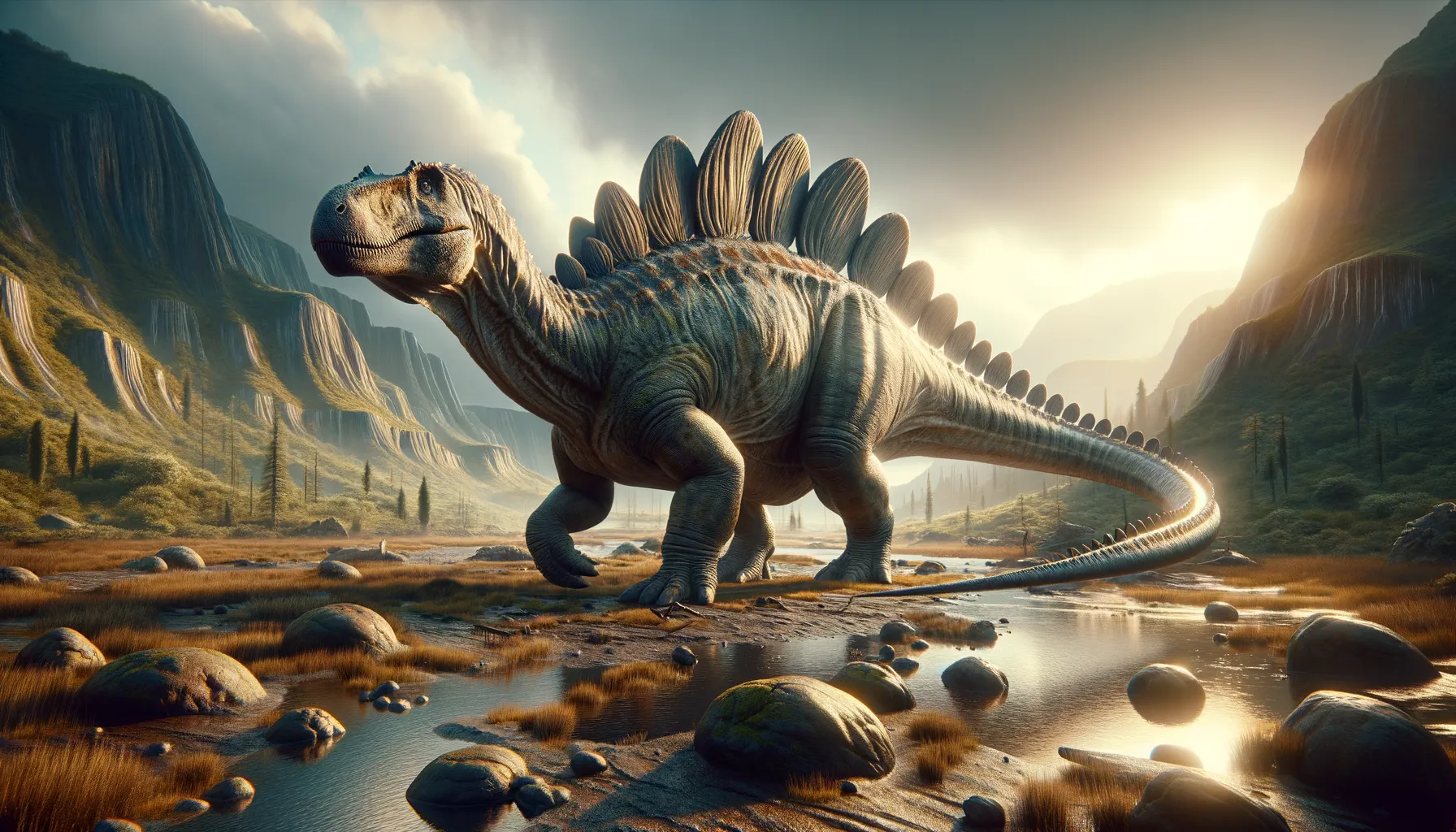
Wuerhosaurus
The armored giant of the ancient world!
Period
Cretaceous
Length
Grew up to roughly 23 feet long.
Height
Reached heights of about 8 feet.
Weight
Estimated to weigh around 4 tons.
Wuerhosaurus was a herbivorous dinosaur that roamed the Earth during the early Cretaceous period. Known for its distinctive dorsal plates, it shares similarities with the well-known Stegosaurus. Found primarily in China, this dinosaur had a strong build, supporting a bulky body and a tail that might have been used for defense. Its fossil remains have provided key insights into the evolutionary traits of plated dinosaurs.
Diet
Wuerhosaurus was a herbivore, feasting on various types of plants and foliage. Its beak-like mouth helped it efficiently strip leaves and vegetation from branches.
Hunting
Being a herbivore, Wuerhosaurus did not engage in hunting behavior. Instead, it browsed for food in the abundant plant life of its environment.
Environmental challenges
Wuerhosaurus faced challenges from changing climates and shifting landscapes that could affect its food supply. Predators in its environment also posed a threat, prompting it to use its spiked tail for defense. The need to find sufficient food sources required adaptation to the surrounding flora, which varied with environmental changes.
Speed
Wuerhosaurus moved at a slow pace.
Lifespan
It lived for several decades.
First discovery
Discovered in China in the 1970s.
Fun Facts
- Wuerhosaurus was a dinosaur that lived during the early Cretaceous period, about 130 to 120 million years ago.
- This dinosaur is known for its large, bony plates that ran along its back, similar to its more famous cousin, the Stegosaurus.
- Wuerhosaurus was a herbivore, meaning it fed on plants, and likely used its plates for display or temperature regulation.
- Fossils of Wuerhosaurus have been found in China, which shows us it lived in what is now Asia.
- Despite its intimidating size, Wuerhosaurus had a relatively small head compared to its body.
- Scientists believe the tail spikes of Wuerhosaurus might have been used for defense against predators.
- Wuerhosaurus belongs to a group of dinosaurs known as stegosaurians, which are well-known for their distinctive body armor.
Growth and Development
Like other dinosaurs, Wuerhosaurus likely experienced rapid growth phases during its early life. As it matured, its characteristic plates and tail spikes developed fully, providing protection and a greater range of defense strategies. Over time, its enduring success would rely on reaching full size, ensuring better survival against predators.
Habitat
Wuerhosaurus thrived in what are believed to be semi-arid regions with seasonal variations. It inhabited areas where food was abundant, such as riverbanks and floodplains. These habitats provided both shelter and essential dietary resources, ensuring its survival amidst varying conditions.
Interaction with other species
Wuerhosaurus likely coexisted with other herbivores and carnivores, creating a dynamic ecosystem. Social interactions may have included both competitive and cooperative elements, especially regarding food sources. Its defensive anatomical features discouraged predators, impacting predator-prey dynamics.
Natural lifespan
A Wuerhosaurus lived naturally for several decades.
Reproduction
Reproduction for Wuerhosaurus likely involved laying eggs in nests, as with many other dinosaurs. Mating behaviors could have included displays involving their distinctive back plates. Parental investment after hatching was minimal, leaving young to fend for themselves early on.
Social behaviour
While primarily solitary, Wuerhosaurus may have engaged in group behaviors during migration or foraging. Herding could provide increased security against predators. Social interactions within groups were likely consistent with simple hierarchy structures to minimize conflicts.
Fossil locations
Wuerhosaurus fossils have been predominantly discovered in the Tugulu Group formations of China. These discoveries have been pivotal in understanding the diversity and geographic spread of plated dinosaurs. The location details have offered significant insights into the ecological conditions of the early Cretaceous period.
